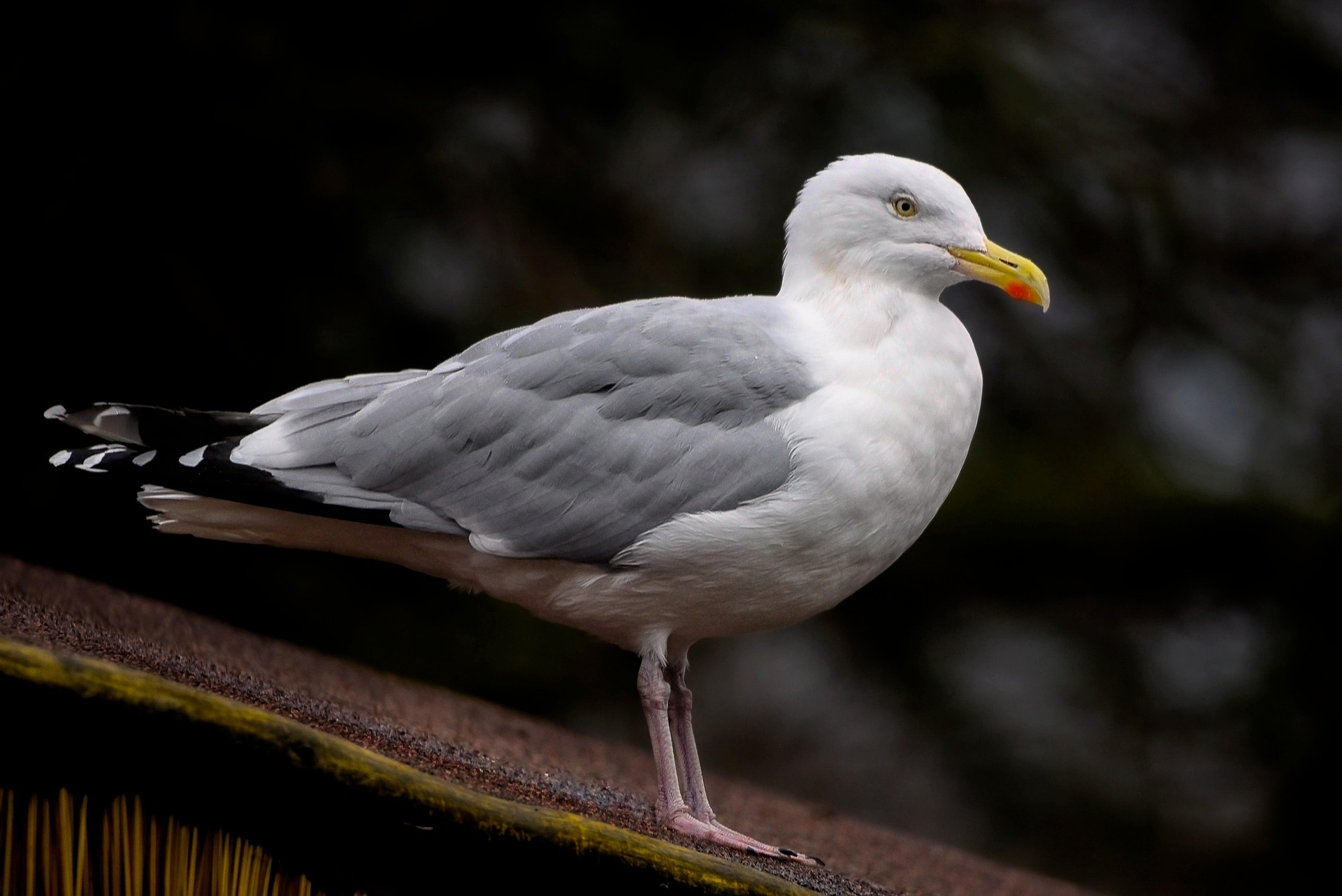 These gulls can be a bit of a nuisance, but they are an important part of our environment. They do make an awful lot of noise!
These gulls can be a bit of a nuisance, but they are an important part of our environment. They do make an awful lot of noise!

You may think of this simply as a seagull, but in fact there are 12 different kinds of gulls found near the sea. The Herring Gull is simply the most common of these. They are large, noisy gulls and can be seen, and heard, throughout the year around the coast and closer inland around rubbish tips, fields, large reservoirs and lakes. The adults has a light grey back, white under parts, and black wing tips with white tips. Their legs are pink and they have webbed feet. Their curved bills are marked with a red spot.
Males and females bond for life and jointly construct their nests on cliff sides and will frequently build their nests on the roofs of houses. They typ[ically lay 2 or 3 eggs, and both the mother and the father will sit on them to incubate them. The chicks are born after about 30 days and are fed by their parents, who regurgitate food for them. They learn to fly when about 40 days old and soon become fully independent. The young birds are mottled brown and develop the adult colouring by the time they are four years old..
The gulls are omnivores - they will eat anything. They have evolved in close association with human activities and while they do dive in search of fish, much of their food is scavenged from rubbish bins and the remnants of human lunches. You may see them in large flocks surrounding fishing boats, waiting for the fishers to throw surplus fish and fish waste back into the sea.
 You may like to have a picnic here, its a lovely spot to sit with your fish and chips or pasty. The gulls are particularly fond of chips and pasties, so hold on tight if you don't want to lose them! When you are ready, walk further along the quay to the next post.
You may like to have a picnic here, its a lovely spot to sit with your fish and chips or pasty. The gulls are particularly fond of chips and pasties, so hold on tight if you don't want to lose them! When you are ready, walk further along the quay to the next post.
When you reach the next post PRESS THIS BUTTON